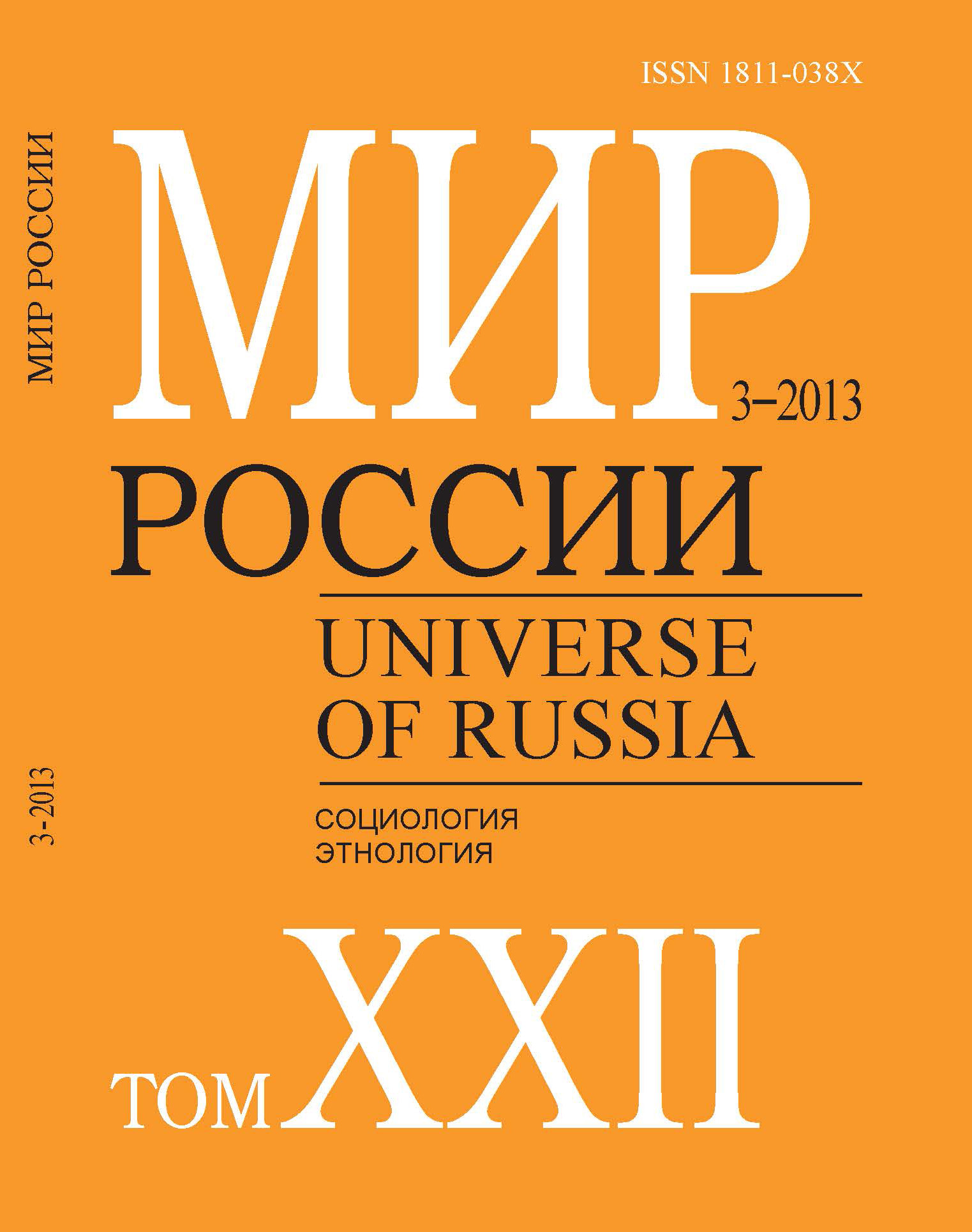Reflections on the Problem of Russia’s Middle Class in the Context of the Paper by Gudkov and Zorkaya “Sterilization of Social Differentiation: Russian ‘Middle Class’ and Emigration”
Abstract
Vasily Anikin — Associate Professor, Chair for Social and Economic Systems and Social Policy, National Research University “Higher School of Economics”. Address: 20, Myasnitskaya St., Moscow, 101000, Russian Federation. E-mail: vasiliy.anikin@gmail.com
This essay discusses an alternative viewpoint towards the results and ideas presented in the article by L. Gudkov and N. Zorkaya, “Sterilization of Social Differentiation: Russian ‘Middle Class’ and the Emigration”, published in the previous issue of ‘The Universe of Russia’. In this article, the authors substantiate the idea that there is no middle class in Russia. Instead, they prefer to speak of a minority of educated and well-paid young salariat in megapolises, the main civil and political intentions of whom are formed by their will to emigrate from the country. However, the author here claims that from
adopting a different methodology these people could be considered only as a minor part of the upper middle class. He claims that Gudkov and Zorkaya are misguided by employing a functionalist perspective on a social structure.
On the basis of broad literature and empirical studies, the author argues that the structuralist view is more appropriate when middle class is considered as a social group. The latter is crucial in the course of defining borders and the internal structure of the middle class. In this paper, it is shown that the structuralist way of thinking uncovers the heterogeneity of the middle class in Russia, both its core and periphery. According to studies cited by the author, the Russian upper middle class constitutes the social core of this group and may be 15% of the total population from urban and rural areas. It consists of managers, supervisors, executives, entrepreneurs, and professionals who also possess many modern skills and qualifications which are required in modern sectors of the Russian economy. In other words, these people could be considered informational workers that constitute the upper middle class not only in Russia. The lower middle class in Russia is defined as highly structured and consisting of both close and far periphery. The close periphery (21%) comprises of self-employed, semi-professionals and workers characterized by status inconsistency between their qualification and occupational statuses, and unemployed pensioners. The far periphery (23%) includes those Russians who either have no tertiary education, demonstrate low self-identification, or low well-being (lower than the median level for their settlements measured by the durables consumption and income). The author points out that the structuralist approach allows certain predictions about the future of the middle class. At the transition to a post-industrial society the worldwide shrinkage of middle classes in different countries might be reflected in Russia in the process of elitisation of the upper middle class and prolitarization of the lower middle class.






